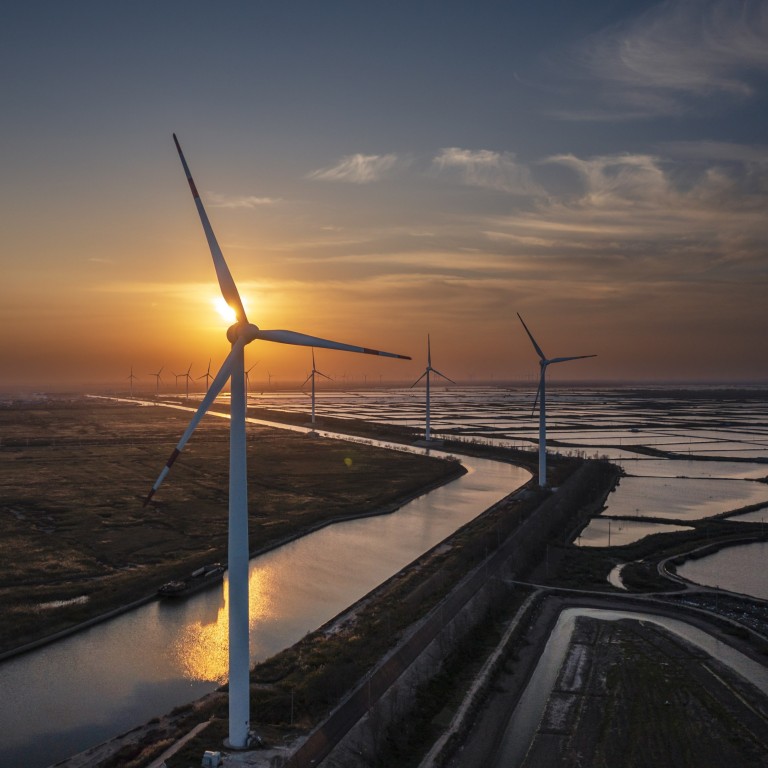
China’s power sector could hit peak carbon emissions 5 years ahead of national goal, study finds
- Researchers say the sector will have to do this earlier than the 2030 target and drive the transition towards carbon neutrality
- They also call for installed capacity of coal-fired power plants to be strictly controlled up to 2025 and gradually phased out after 2026
China’s power sector could reach peak carbon emissions as early as 2025 – five years ahead of the national target, according to a new study by Chinese researchers.
The researchers looked at three different scenarios based on electricity demand, power sources and supporting technologies, finding that the sector could bring carbon emissions to a peak before the 2030 target in each of those scenarios.
If non-fossil fuels are developed, as well as energy storage and demand-side response, China’s power sector could reach peak carbon emissions as early as 2025, according to the report.

“The power sector will be a hybrid system led by the development of wind and solar and combined with a number of controllable sources … including hydro, nuclear, gas-fired power, pumped hydro and biomass,” Yuan Jiahai, lead author of the report and a professor at the North China Electric Power University, said in a webinar on the findings on Thursday.
Installed capacity of wind and solar power – the main alternatives to reduce carbon emissions in the sector – is expected to reach 1,800 gigawatts by 2030, more than triple last year’s 535GW. That should be enough to meet growth in the country’s electricity demand when it is in place from 2031, the report said.
China gets more than 60 per cent of its electricity from coal-fired power at present. The researchers called for the installed capacity of coal-fired power plants to be strictly controlled up to 2025 and gradually phased out after 2026. That reduced use of the dirty fossil fuel could be accelerated after 2030, with carbon capture and storage technology gradually installed in the remaining coal plants, the report said.
What is green hydrogen and can it help China meet its carbon goals?
While Beijing has set a long-term goal of becoming carbon neutral, the near-term targets to support this are still unclear.
Lin Jiang, a senior researcher with the Lawrence Berkeley National Laboratory in California, told the webinar that clean energy – including wind, solar and nuclear – could make up 80 per cent of China’s electricity generation by 2035.
“Technical innovations and cost reductions in solar, wind and energy storage have often far exceeded people’s expectations, which lays a solid foundation for China to build a new type of renewable energy-dominated power system at a lower cost,” said Lin, who was not involved in the study.
The researchers also estimated that the industrial sector could reach peak carbon emissions around 2030, followed by the building industry between 2030 and 2035, and the transport sector before 2040.
“If we want to ensure the whole economy reaches peak emissions as scheduled, it is critical for the power sector to bring emissions to a peak earlier,” report author Yuan said.
Some energy-intensive industries have laid out plans to reach peak carbon emissions earlier than the national target.
The steel sector – which produces about 15 per cent of China’s carbon emissions – aims to do this by 2025 and then reduce emissions by 30 per cent in the next five years. The aluminium sector has also set a 2025 target for peak carbon emissions and plans to cut emissions by 40 per cent from the peak by 2040, according to a draft action plan released by the industry in April.

